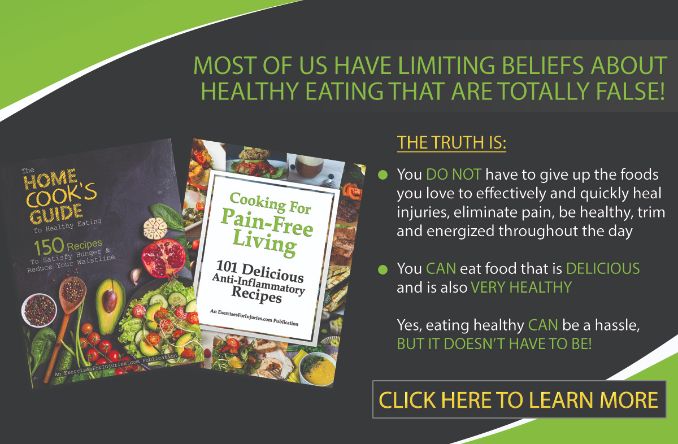If you live alone, you may find it more difficult to eat healthy for one primary reason: It seems hardly worth the effort.
Why slave over a hot stove for hours if you don’t get to share what you’ve created? It’s easier to just do take-out and avoid all the dirty dishes. Besides, what would you do with all those leftovers anyway?
Unfortunately, regularly consuming microwave dinners, fast-food, and restaurant food isn’t good for your overall health. Studies show that these sorts of diets are more likely to lead to problems like overweight, type 2 diabetes, heart disease, and cancer.
Cooking at home, on the other hand, has a lot of health benefits. In a 2014 study, researchers found that those who frequently cooked home meals ate healthier and consumed fewer calories than those who didn’t. A later study also found that people who cooked at home more often, rather than eating out, had healthier diets overall without higher food expenses.
A third study also found that those who ate home-cooked meals more than five times per week were 28 percent less likely to be overweight than those who ate home-cooked meals less than three times per week. They were also 24 percent less likely to have excess body fat.
It’s clear that cooking at home is the healthier option, but if you live alone, you may groan at the thought of putting in the work. We urge you to give it one more try. By using the tips below, you should find it a lot easier.
 1. Stock Your Freezer with Frozen Fruits and Vegetables
1. Stock Your Freezer with Frozen Fruits and Vegetables
Frozen produce is a single person’s best friend. You can easily portion out what you need for your meal, reducing waste, and you always have healthy options on hand.
Pop the veggies in the microwave for a few minutes and you have a great side dish or a handy option to add to casseroles, stir-fries, and stews. Warm-up frozen fruits and add them to your morning oatmeal or smoothie, or use them to top your ice cream or other tasty desserts.
Frozen produce items are economical and studies show they're just as nutritious—often even more so—than fresh. Just make sure you read the ingredient list and get only those products that are free of extra sauces and sugars.
 2. Add In Some Frozen Meats
2. Add In Some Frozen Meats
Just as you can portion out your frozen veggies and fruits, you can do the same with frozen meats. Get a bag of frozen shrimp and then pour out just what you need for your cocktail, stir-fry, or salad. Frozen salmon, tilapia, and cod are also readily available in the frozen food section and often come in individually wrapped filets that thaw within an hour or so and are ready to cook.
Other cuts of meat are also available frozen or you can buy fresh and freeze them yourself. Select a tray of chicken breasts, cook one, and freeze the rest. Store half your pound of hamburger in the freezer for your next meal, or one of the two steaks you bought. The freezer is your friend.
 3. Know What Else You Can Freeze
3. Know What Else You Can Freeze
Did you know that you can bake a cake, freeze half of it, then take it out when you’re ready to enjoy it? You can do the same with cooked meat, stews, lasagna, casseroles, and more. The secret is knowing how to store these items so they will taste just as good (or even better) the second time around.
Here are some helpful tips:
- Always cool completely. Allow cooked food to cool completely before putting it into the freezer. Place food in shallow containers to promote quick cooling, then place it in the freezer as soon as the food approaches room temperature. Another option—chill in the refrigerator first, then freeze. This makes smaller ice crystals and can protect the food from textural damage.
- Use containers when you can. Divide cooled leftovers into freezer-safe containers. Leave enough room at the top for swelling. Cover with plastic wrap—this helps prevent freezer burn.
- Use sealable bags. If you don't have containers or would rather use freezer bags, place the bag in a bowl to help stabilize it, then fill it with the cooled leftovers. Squeeze the bag to remove the excess air and seal.
- Create small portions. Since you’re freezing for one, consider breaking up your leftovers or other items into small packages. Otherwise, you'll be faced with more than you can eat all over again. Smaller portions also freeze faster.
- Label your items. If you don't mind marking up your containers, label them with the date they go into the freezer. The U.S. Food and Drug Administration (FDA) recommends storing leftovers for no more than 3-4 months. You can store some items longer than that, but it helps to have labels so you know how old an item is. You can use a marker to write on the bag or plastic container or use adhesive labels (like address labels). Another option—put some Scotch tape or masking tape on the container or bag, then write on the tape with a permanent marker.
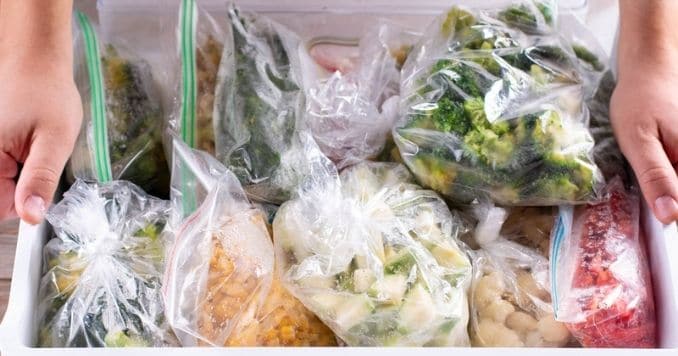 So, what’s safe to freeze?
So, what’s safe to freeze?
- Pasta bakes
- Soups
- Stews
- Casseroles
- Lasagne
- Cooked meats
- Pizza
- Bread and baked goods
What doesn’t freeze so well:
- Cream-based dishes (yogurt, mayonnaise, sour cream)
- Salads
- Egg-based sauces
- Hard-boiled eggs
- Stuffed and uncooked meats (like chicken breasts and pork chops)
- Tuna
- Pasta salads
4. Rekindle the Joy of Potatoes
Potatoes are super cheap, last a long time, and can easily be cooked in the oven or microwave for a healthy side dish (as long as you’re not on a low-carb diet). Top a baked potato with a can of chili or enjoy it with a side of steamed broccoli for a fast lunch or dinner.
You can even split a large potato in half, enjoy one-half and then store the other in the refrigerator for a few days to have later in the week. Don't know what to make for dinner tonight? Pop a potato in the oven, fry up an egg or two for protein, and microwave some frozen veggies and you're good to go.
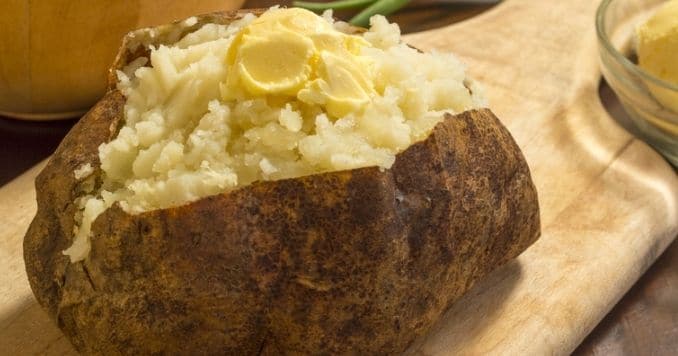 5. Resist the Urge to Overbuy Fresh Produce
5. Resist the Urge to Overbuy Fresh Produce
All those fresh fruits and veggies look so tempting, but of all your food options, they will spoil the quickest. When it comes to fresh, plan ahead. What will you use in five days or less? Limit yourself to buying only that much and you’ll reduce the waste of having to throw spoiled food away.
Most stores offer fresh produce in singular options, or you can head to the farmer’s market if it’s the right time of year and get your few fresh items there.
6. Consider the Toaster Oven
For a single person, the toaster oven can be the favorite kitchen appliance. It allows you to bake, roast, or toast all sorts of small items to their tastiest best—often much better than the microwave. Heat a slice of leftover pizza in the toaster oven, for example, and avoid that soggy texture the microwave tends to create.
You can also bake just a few cookies in a toaster oven and save yourself the worry of what to do with all the rest. Roast a single serving of veggies, bake a piece of fish or make a slice of avocado toast. Give it a try and see if you don't become obsessed.
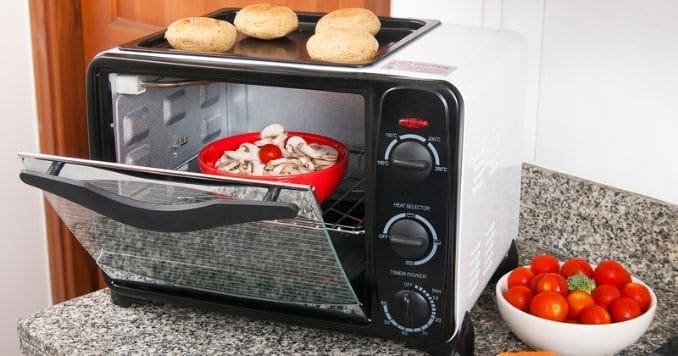 7. Scale Down Your Recipes
7. Scale Down Your Recipes
You can always freeze your leftovers, but if your freezer is full or you just don’t want to bother, practice scaling down your recipes.
Make this easier on yourself by creating a conversion chart (or find one online) and keep it on your refrigerator or other nearby location. It will help you more quickly convert larger measurements into smaller ones. (Half of ¾-cup, for instance, is 6 tablespoons—a conversion chart can help you reference that quickly without having to go through the math.)
Of course, you can always Google any questions you have, such as “how many tablespoons is 1/6-cup?”
8. Invest in a Small Slow Cooker
Slow cookers make it super easy to make healthy foods without having to spend hours in the kitchen. Many are large, however, and you’ll need to store your leftovers. Instead, look for a smaller one (often called a “mini” cooker) that will cook only what you need. Then you can simply throw in your ingredients in the morning and have a healthy, tasty meal waiting for you when you get home.
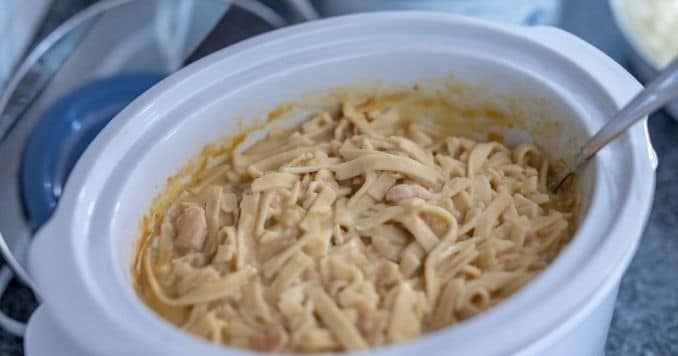 9. Head for the Bulk Bins
9. Head for the Bulk Bins
Most stores have bulk bins of grains, nuts, seeds, dried fruits, flours, trail mixes, and rice. If you enjoy any of these items, this is a great place to shop because you can get just what you need for a good price and they will last a long time.
10. Learn How to Make Quick and Easy Meals for One
On those days when you just don’t feel like cooking, it helps if you have a list of quick and easy meals you can turn to. Simple dishes like omelets, grilled sandwiches, burritos, soups, salads, potatoes, and pasta can be made quickly and easily and still provide all the nutrition you need.
Remember, cooking for one doesn’t have to be a chore. Prepare ahead and use the tips above to minimize your work. Don’t be afraid to cook a larger meal and freeze individual portions for future meals. Preparing your meals at home is a much healthier option, so taking the time to invest in your nutrition now will pay off in the long run.
Learn the best tips and tricks for healthy eating. Collect your copy of these anti-inflammatory cookbooks here.
“>


